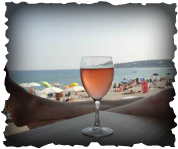
When the summer season rolls in many of us are so ready to trade in those heavy reds for a refreshing rose. This is a time to chill back; it's a smile, it's a kiss, it's a sip of wine, it's summertime!
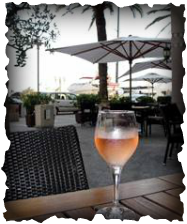
Rose colors can vary from salmon orange to pale red depending on the many red grape varietals and wine making methods used, after all rose is their summer sister. These are made by leaving freshly pressed wine in contact with its skins (maceration) for a short time to give the various hues of pink. They are made in a broad range of styles from dry to off-dry to sweet. Rose wines are refreshing in the heat of summer; they combine the crispness of white wine with the tasting notes of bright berry characters of a red wine.
Today, many domestic and international wineries are producing respectable roses, so there is that special one out there just waiting for you. Roses are cool wines that top the charts for food friendly versatility; summer meals that require no fuss. Nothing says summer to me better than a rose. 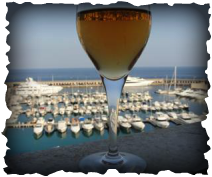
I found this sentiment true while on summer vacation in Cote d' Azur and the surrounding areas. For those serious wine lovers who consider rose wines are insipid, just a ladies fun wine, or a quaffable wine for tipping back to gulp, please dispel that assumption because virtually everyone in the French Mediterranean coastal towns enjoy rose. They drink rose all day long.
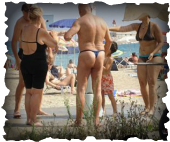
You see the French enjoying a lean rose on the beach while sunbathing and grabbing a quick bite to eat at one of the many outdoor beach cafes. They enjoy these crisp wines with their late lunch, pre-dinner aperitif, and with an evening meal. This is how they roll, the joie de vivre lifestyle. So while in the French Riviera do what the French do!
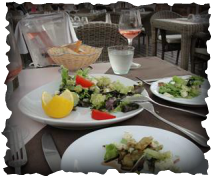
Compared to blush wines such as white zinfandels, these French roses are drier in style. Some say that Tavel is the source of France most famous roses made from a blend of Grenach, Clairett, Bouboulenc, Cinsaut, Syrah, and Mourvedre grapes. Yes indeed, they are wonderful but during my "winecation" I had the opportunity to tour other appellations in the Provencal Wine Region.
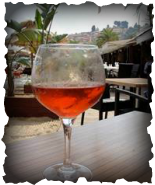
Having non-Francophile tastebuds, I must say that I found some of the roses from Cotes de Provence, Coteaux d'Aix-en-Provence, Marseille, and Bandol are on par with Tavel. Their blends are GCM, Counoise, Carignan, Tibouren, and also a touch of Rolle. There are ordinary roses and there are better roses. Personally, I enjoyed so many of the bone dry and aromatic French roses, especially paired with the flair of Provencal and Mediterranean cuisine. These wines are good examples of subtle nuances and lively layers of complexity with a zesty minerality finish. So many roses, so little time.
Let me share with you 'gout de terroir' (taste of the soil) from just a few of these delicious vins. 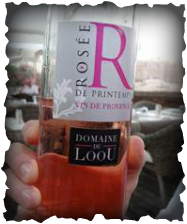
Domanin du Loou is located in the Coteaux Varois appellation. Loou is the oldest winery in the appellation and is surrounded by Roman-era archaeological excavations. The winery itself was once a Gallo-Roman villa for a wine facility dated from 46 BC. The Roman wine making artifacts are on display in the tasting room; a must see! 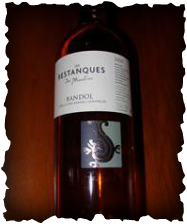
Restanque du Bandol comes from one of the oldest vineyards in France. Actually, wine has been made in this region for at least 2,000 years. Some say the Bandol appellation is renowned for producing the best rose in the world. Destemming the Mourvedre grape is done by hand because its stems remain green even when ripe, therefore, can leave a nasty flavor to the wines.
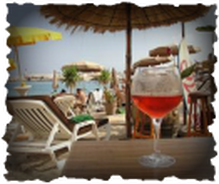
A rose is just not a rose without art in its midst. Taking a mid-afternoon break from the summer sun, we relaxed under a cafe umbrella to try another local rose and a bite of food. Our view was an unexpected boon! There was the work by English sculptor Damien Hirst's 'Virgin Mother' looking out over the blue Mediterrean sea. This massive sculpture is breathtaking standing over 10 m tall in polished and painted statue at Fontvieille Harbour guiding the boats into port.
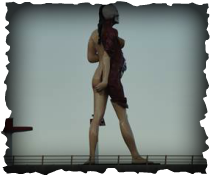
Indeed, it was not an understatement that some of the French were not at all enthusiastic that this object was at their back door and they made their disdainful comments publicly known. We finished our wine, strolled for a closer look to marvel at this work of art, then went back to the cafe for another glass of rose to exchange delightful banter on the marvelous sculpture. If in London for the Olympics this summer, check out Brit art bad boy's exhibit at the Tate Modern, or at Gagosian Galleries in NYC, or online at artdaily.com.
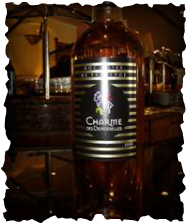
Charme de Demoiselles is located in the Var's hinterland. These wines are typical of Provence that maintains the Flora & Fauna charm. Located thirty minutes from
Saint Tropez, the Chateau sits on 1,000 year old cultivated grape growing soil that once belonged to the ancestors of the Prince of Monaco. The scene of how we enjoyed this delicious rose? It was a panoramic view from our cafe table at La Porte de Monaco: Princess Stephanie's penthouse suite, the church where Grace Kelly was married to Prince Rainier (I assure you the irony did not escape me). Cool summer early evening breezes on the balcony of an al fresco restaurant with a picturesque view of the cliffs and sea. 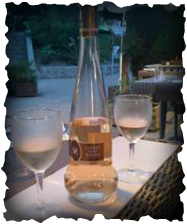
Chateau Saint Roseline. This winery and vineyards have bonafide lineage. History has it that Roseline was the mother prioress of the Abbey Celle Roubard from 1300 in Provence. This site became one of the first vineyards in Provence. The Abbey was restored and renovated into the winery that is today without altering its historical features. 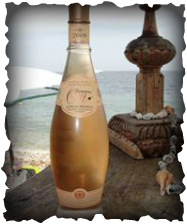
Chateau de Selle Ott Domainez is an 18th c. winery that is considered the heart
of Cotes de Provence. This rose was more than just taste. It became even more enjoyable as we sat among the French, German, Dutch, Spaniards, and English in an outdoor cafe watching the World Cup on wide TV screens. The energy and emotions of the crowd in addition to the evening's refreshing Mediterranean air really opened up and excited this rose by revealing hints of soccer passion fruit. The game's climax took us all to the edge of our seats in 'extra time' as we watched the game and listened to the thrilling cheers from the crowd. When the game ended, another glass of rose was definitely in order! 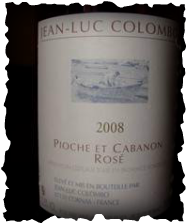
Jean Luc Colombo is hailed as "the winemaking wizard of the Rhone by Michael Roland". One of his wineries is located in N. Rhone Cornas Valley. To learn more about the winemaker, check out the archive interview with Jean Luc by Wine Spectator: Wine Talk dated 4/07. We enjoyed his wines when they were at reasonable prices, but since his recent notoriety, needless to say, his prices have increased. We enjoyed this wine after a little gambling in Monte Carlo.
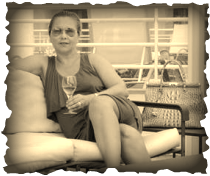
Sorry folks, but some of these roses are not for export, but I was thinking of all of you while I was enjoying them! Again, many international and domestic wineries are producing nice roses and are available through your local wine shops, grocery stores, wineries, and mail order.
I have enjoyed Chilean Malbec roses, but have yet to taste Malbec roses from Argentina, however, definitely on my radar. Portugese roses are nice. I found a rose from Bulgaria that was interesting. Also, I enjoyed many roses from Valencia, Spain made from the Bobal grape; again there is something magical about the pairing of the Mediterranean and rose wines. Some Italian roses are made from red varietals such as Nero D'Avola, Montepulciano, Sangiovese, Negroamaro, Pinot Nero, Frappato, etc... On a side note, while living in down under, I had the pleasure of tasting nice Shiraz roses from Oz…again only some of those Australian roses may be for export. Don't forget that Virginia is also producing some fabulous roses that are perfect to sip by the pool this summer. To find more information on Virginia's pinkies, www.Virginiawine.org . 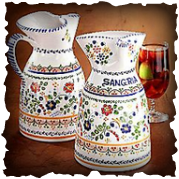
If you find that once you have tried a rose and this type of wine is just not for you… recycle it to make Rose Sangria. All you need to do is add 1 bottle of rose, raspberries, strawberries, and 1/3 cup sugar in a pitcher. Cover and refrigerate overnight. Then add 4 cups ginger ale, ice, and 1 sliced lemon and serve. Voila!
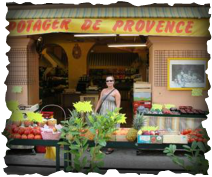
Whether one calls it terrior, a sense of place, or elevage (winemaking methods) it is all about a cumulative experience; enjoying the regions wine and cuisine, appreciating its culture, and learning its history. The crux is, to taste the place. With that in mind and wherever your summer finds you, yes, rose is a rose is a rose. Gertrude Stein summed it up best, "Things are what they are".
0 Comments
Your comment will be posted after it is approved.
Leave a Reply. |
Details
Grape EdVentures™The Delong 100 Grape Varietal Challenge encourages all wine enjoyers to expand their wine drinking horizon by seeking out unusual grape varieties. These past few years, I have tasted over 180 grape varieties. After all, there are over thousands of grape varieties world wide. With so many wine grapes, styles of wine, and wineries to explore, wine is an educational adventure. So grab your virtual passport and come along with me on a Grape EdVenture™ around the world. Archives
December 2023
|
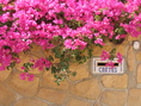
Michelle Prince
[email protected]
All works are subject to copyright protection, registered to A Grape Place 2 B LLC. © 2010-2024. All rights reserved.